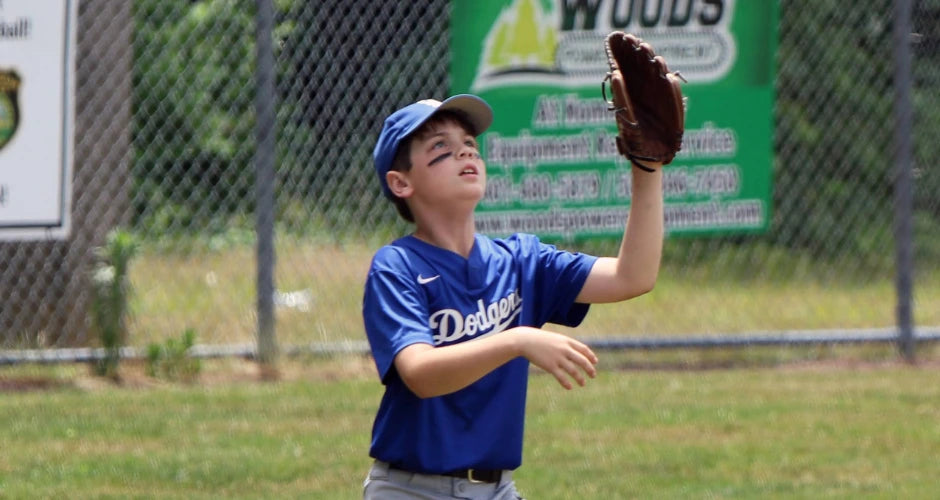
Baseball Mode
What Is A PO In Baseball? (Mastering The Basics)
What Does PO Mean In Baseball?
Why Putouts Matter in the Game
What Is An Assist In Baseball And How Is It Different From A Putout?
What is an unassisted putout?
Unusual and Rare Putouts
Is A Strikeout A Putout For The Catcher Or Pitcher?
How Does A Catcher Get A PO In Baseball?
What catcher has the most putouts in MLB history?
What Positions Get The Most Putouts In Baseball?
MLB Putout Leaders (Career)
| RANK | PLAYER NAME | # OF PUTOUTS | DEFENSIVE POSITION |
|---|---|---|---|
| 1 | Jake Beckley | 23,743 | 1st Base |
| 2 | Cap Anson | 22,572 | 1st Base |
| 3 | Ed Konetchy | 21,378 | 1st Base |
| 4 | Eddie Murray | 21,265 | 1st Base |
| 5 | Charlie Grimm | 20,722 | 1st Base |
| 6 | Stuffly Mcinnis | 20.120 | 1st Base |
| 7 | Mickey Vermon | 19,819 | 1st Base |
| 8 | Jake Daubert | 15,634 | 1st Base |
| 9 | Lou Gehrig | 15,525 | 1st Base |
| 10 | Joe Kuhel | 19,386 | 1st Base |
MLB Putout Leaders (Single Season)
| RANK | PLAYER NAME | # OF PUTOUTS | DEFENSIVE POSITION |
|---|---|---|---|
| 1 | Jiggs Donahue | 1,846 | 1st Base/Catcher |
| 2 | George Kelly | 1,759 | 1st Base |
| 3 | Phil Todt | 1755 | 1st Base |
| 4 | Wally Pipp | 1710 | 1st Base |
| 5 | Jiggs Donahue | 1997 | Ist Base/Catcher |
| 6 | George LaChance | 2001 | 1st/Shortstop |
| 7 | Tom Jones | 1687 | Ist Base |
| 8 | Emie Banks | 1682 | Ist Base/Shortstop |
| 9 | Wally Pipp | 1667 | Ist Base |
| 10 | Lou Gehrig | 1662 | 1st Base |
MLB Assist Leaders (Career)
| RANK | PLAYER NAME | # OF ASSISTS | DEFENSIVE POSITION |
|---|---|---|---|
| 1 | Rabbit Maranville | 8,567 | Shortstop/2nd Base |
| 2 | Orzie Smith | 8,375 | Shortstop |
| 3 | Cal Ripken Jr | 8,234 | Shortstop/and Base |
| 4 | Bill Dahlen | 8,138 | Shortstop |
| 5 | Omar Vizquel | 8,050 | Shortstop |
| 6 | Luis Aparicio | 8,006 | Shortstop |
| 7 | Eddie Collins | 7,736 | 2nd Base |
| 8 | Luke Appling | 7,543 | Shortstop |
| 9 | Tommy Corcoran | 7,509 | Shortstop |
| 10 | Bobby Wallace | 7,465 | Shortstop/Pitcher |
MLB Assist Leaders (Single Season)
| RANK | PLAYER NAME | # OF ASSISTS | DEFENSIVE POSITION |
|---|---|---|---|
| 1 | Ozzie Smith | 621 | Shortstop |
| 2 | Glenn Wright | 601 | Shortstop |
| 3 | Dave Bancroft | 598 | Shortstop |
| 4 | Tommy Thevenow | 597 | Shortstop / 2nd Base / 3rd Base |
| 5 | Ivan de Jesu | 535 | Shortstop |
| 6 | Cal Ripken Jr. | 583 | Shortstop / 3rd Base |
| 7 | Whitey Wietelmann | 581 | Shortstop / 2nd Base / 3rd Base |
| 8 | Dave Bancroft | 589 | Shortstop |
| 9 | Rabbit Maranville | 574 | Shortstop / 2nd Base |
| 10 | Don Kessinger | 573 | Shortstop / 2nd Base |
What Is A 5-3 Putout In Baseball?
What Is A 9-3 Putout?




